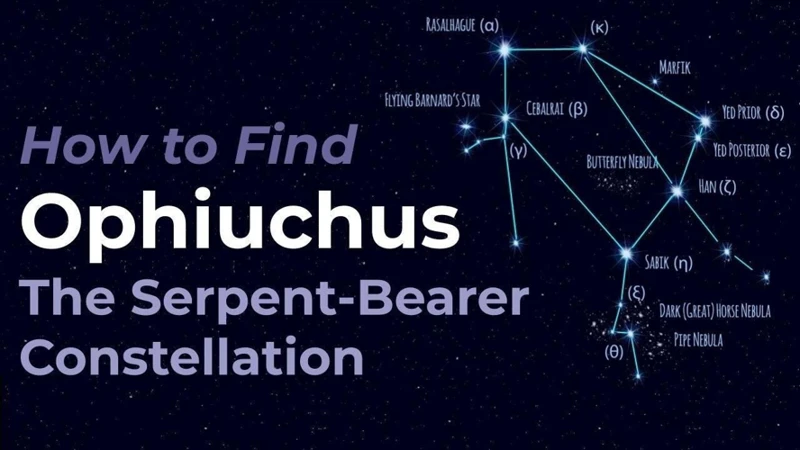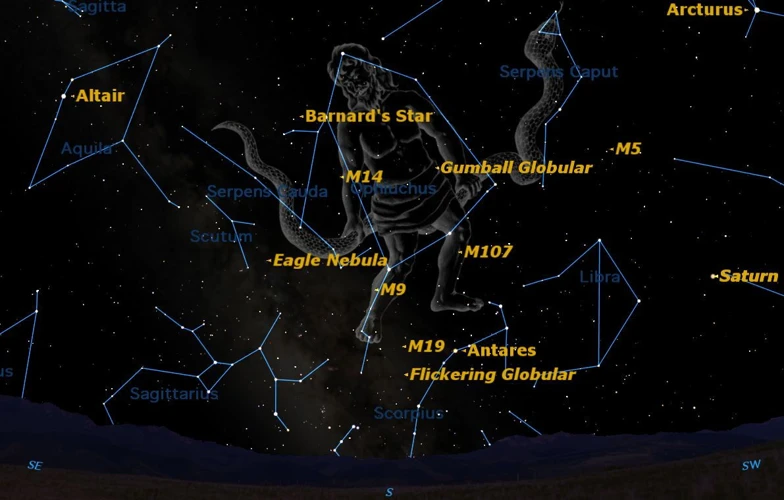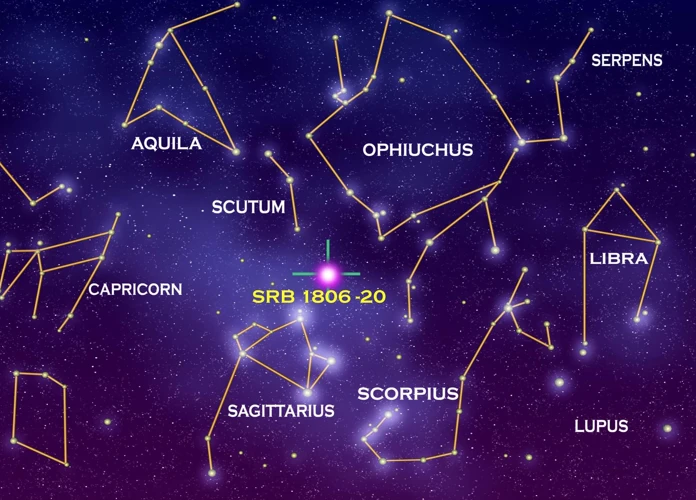Welcome to the fascinating world of constellations and their role in astronomy! Have you ever looked up at the night sky and wondered about those clusters of stars that form intricate patterns? Constellations have captivated human imagination for centuries and have played a significant role in the study of astronomy. In this article, we will delve into the meaning and historical significance of constellations, explore their role in celestial navigation, uncover the fascinating stories and mythology behind them, and discuss the importance of modern constellations in our understanding of the universe. So, let’s embark on this celestial journey and unravel the mysteries of the stars above!
What are Constellations?

Constellations are groups of stars that form recognizable patterns or shapes in the night sky. They have been used by humans for thousands of years as a way to navigate, tell time, and understand the cosmos. These patterns may be imagined, representing mythological beings or objects, or they may depict real-life objects, such as animals, plants, or inanimate objects. There are 88 official constellations recognized by the International Astronomical Union (IAU), each with its unique set of stars and stories associated with them. These constellations span the entire celestial sphere, allowing astronomers to divide up the night sky into distinct regions for observation and study. It’s worth noting that while some constellations are visible throughout the year, others are seasonal and can only be seen during specific times. To explore and identify constellations, astronomers use specialized tools and techniques, such as star charts, telescopes, and astrolabes. By mapping out and studying constellations, scientists have been able to gain a deeper understanding of the universe and our place within it. To learn more about the fascinating process of mapping constellations, you can read our article on science mapping constellations. So, let’s continue our exploration and delve into the historical significance of constellations.
The Historical Significance of Constellations

The historical significance of constellations dates back thousands of years, with diverse cultures around the world creating their own unique interpretations and stories based on the star patterns they observed. One of the earliest recorded instances of constellation usage can be traced back to ancient Mesopotamia, where cuneiform tablets mentioned constellations as early as 3200 BCE. These early astronomers used the positions of stars to mark the changing seasons and determine the best times for planting and harvesting crops. In ancient Egypt, constellations were not only used for practical purposes but also held religious and mythological significance. The Egyptians associated certain constellations with their gods and goddesses, believing that their movements in the sky influenced the events on Earth. The Greeks also played a significant role in the development of constellation mythology. The many tales of gods, heroes, and mythical creatures became intertwined with the star patterns, creating a rich tapestry of stories that still fascinate us today. To explore the mythological origins of constellations further, you can read our article on the mythological origins of constellations. As civilizations advanced, constellations became increasingly important for navigation. Sailors relied on the positions of specific stars or constellations to guide their ships across vast oceans. Polynesians, in particular, had an exceptional understanding of celestial navigation, using constellations to navigate the vastness of the Pacific Ocean. Even during the Age of Exploration, constellations played a crucial role in guiding explorers like Christopher Columbus and Ferdinand Magellan on their voyages. So, as we can see, the historical significance of constellations extends far beyond their aesthetic beauty, shaping the way ancient civilizations understood and interacted with the world around them.
Astronomy and Celestial Navigation

Astronomy and celestial navigation have a long and intertwined history. Throughout the ages, humans have looked to the stars for guidance and orientation. By observing the positions and movements of celestial bodies, early civilizations were able to navigate across vast distances and determine their location on Earth. The use of constellations played a vital role in this process, allowing sailors and travelers to find their way even in the darkest of nights. By locating specific constellations, such as the North Star or Polaris, mariners could determine their latitude and orient themselves towards their desired destination. This technique, known as celestial navigation, was especially crucial before the invention of modern navigational tools like compasses and GPS. Astronomers also relied on constellations for their mapping and study of the stars. By observing how constellations changed position throughout the year, they were able to develop complex mathematical models and make predictions about astronomical phenomena. In fact, the study of celestial navigation and astronomy go hand in hand, as both fields rely on the observation and understanding of the night sky. To uncover the secrets of northern constellations, you can read our article on unveiling northern constellations secrets. Next, let’s explore the fascinating stories and mythology behind constellations.
Constellation Stories and Mythology

Constellation stories and mythology have been an integral part of human culture for centuries. Throughout history, people from different cultures and civilizations have looked up at the night sky and interpreted the patterns of stars they saw as mythical figures and legendary tales. These stories were often used to explain natural phenomena, teach moral lessons, or pass down cultural traditions. For example, in Greek mythology, the constellation Orion represents a mighty hunter, while the constellation Ursa Major is associated with the story of Callisto, a beautiful nymph. Similarly, in Norse mythology, the constellation Cassiopeia is linked to the tale of a queen who was punished for her arrogance. These stories not only added depth and meaning to the night sky but also helped people navigate and tell time. By using stars as reference points, ancient seafarers and travelers used constellations to navigate across vast oceans and unfamiliar terrains. Today, the stories and mythology associated with constellations continue to captivate our imagination and inspire works of art, literature, and even scientific discoveries. For a deeper dive into the mythological origins of constellations, you can explore our article on mythological origins of constellations. Now, let’s move on to the practical role constellations play in modern astronomy.
The Role of Modern Constellations
The role of modern constellations in astronomy has evolved significantly with the advent of advanced technology and scientific advancements. While traditional constellations were based on visual patterns formed by stars, modern constellations are defined based on specific areas of the sky assigned to different scientific satellites, probes, and telescopes. These modern constellations serve as points of reference for astronomers to locate and study various celestial objects and phenomena. Here are some key aspects of the role of modern constellations:
1. Satellite Communication: Modern constellations, such as the Global Positioning System (GPS) constellation, play a crucial role in satellite communication and navigation. GPS satellites orbit the Earth and provide precise location information used in navigation devices, mobile phones, and countless other applications.
2. Observation and Research: Modern constellations align with specific areas of interest for astronomers. For example, the Hubble Deep Field constellation was created to facilitate the observations of the Hubble Space Telescope towards a region of space to capture incredibly distant and faint galaxies. Similarly, the Kepler constellation was established to monitor a specific area of the Milky Way to identify exoplanets.
3. Data Transmission: Constellations like Iridium and Starlink consist of multiple satellites working together to enable global data transmission, internet connectivity, and telecommunications. These constellations have a network of satellites orbiting around the Earth, ensuring continuous coverage and fast data transfer.
4. Exploration of the Universe: Space agencies like NASA and ESA have launched various telescopes and observatories, such as the Chandra X-ray Observatory and the James Webb Space Telescope, which are positioned in specific modern constellations. These instruments allow scientists to observe and study the universe, expanding our knowledge of distant galaxies, black holes, and other cosmic phenomena.
5. Collaborative Research: International collaborations have led to the establishment of joint modern constellations, where different nations contribute their resources and expertise to enhance celestial observations. These collaborations ensure a more comprehensive and global understanding of the universe.
Modern constellations continue to play a vital role in astronomical research, exploration, and communication, enabling scientists to gather data, make discoveries, and unlock the mysteries of the universe. Through these advancements, our understanding of space and the cosmos continues to expand, pushing the boundaries of human knowledge.
Conclusion
In conclusion, constellations hold a significant role in astronomy and have captivated human imagination for centuries. They not only provide a way for celestial navigation but also offer a means to understand the universe and our place within it. From their historical significance to the mythological stories associated with them, constellations offer a glimpse into the cultural and scientific advancements of different civilizations throughout history. Today, modern constellations continue to aid astronomers in their exploration and study of the cosmos. By mapping out the night sky and identifying these patterns of stars, scientists can better understand the celestial objects and phenomena that exist beyond our Earth. Whether you are an amateur stargazer or a professional astronomer, the enchanting world of constellations invites us to contemplate the vastness and beauty of the universe. So, next time you find yourself gazing at the stars, take a moment to appreciate the role and significance of constellations in the grand tapestry of astronomy.
Frequently Asked Questions
What is the purpose of constellations?
The purpose of constellations is multifaceted. Historically, they have been used for celestial navigation, helping early explorers and travelers navigate and find their way. Constellations also serve as a way to organize and map the night sky, enabling astronomers to study and locate specific celestial objects.
How are constellations named?
Constellations often derive their names from Greek, Roman, or other mythological figures or objects. Some are named after animals, while others take their names from historical figures or significant celestial objects.
Are constellations fixed or do they change over time?
While the stars within constellations may appear fixed, the constellations themselves change over long periods due to the Earth’s rotation and the resulting precession. Precession refers to the slow wobbling motion of the Earth’s axis, causing the position of celestial objects to shift gradually over time.
What is the significance of the zodiac constellations?
The 12 zodiac constellations are particularly significant in astrology, as they are associated with the Sun’s apparent path in the sky throughout the year. This path, known as the ecliptic, is divided into 12 equal parts, with each zodiac constellation representing a specific period of the year.
Can you see the same constellations from different parts of the world?
No, the constellations visible in the night sky vary depending on the observer’s location on Earth. Due to the Earth’s rotation and axial tilt, different constellations become visible as one moves closer to the north or south poles.
What is the significance of Orion in constellation mythology?
Orion is one of the most recognizable constellations and holds great significance in mythology. He is portrayed as a hunter in various Greek and Roman myths and is associated with great strength and bravery.
Are there any famous astronomical objects located within constellations?
Yes, many famous astronomical objects are located within constellations. For example, the Andromeda galaxy, the Orion Nebula, and the Pleiades star cluster are all found within their respective constellations.
Do all cultures have the same constellations?
No, different cultures have their own unique constellations and mythologies associated with them. For example, Indigenous cultures in Australia have distinct constellations that differ from those recognized in Western astronomy.
How can I find constellations in the night sky?
To find constellations in the night sky, you can use various tools and techniques. Star charts or mobile applications can help you identify and locate specific constellations based on your location and the time of year. Learning to recognize prominent stars and using them as reference points can also aid in identifying constellations.
Are there any ongoing scientific studies related to constellations?
Yes, scientific studies related to constellations are ongoing. Astronomers use constellations to study various celestial phenomena, such as star formation, galaxy evolution, and exoplanet discoveries. Understanding the properties and relationships of stars within constellations helps scientists unlock the secrets of the universe.








